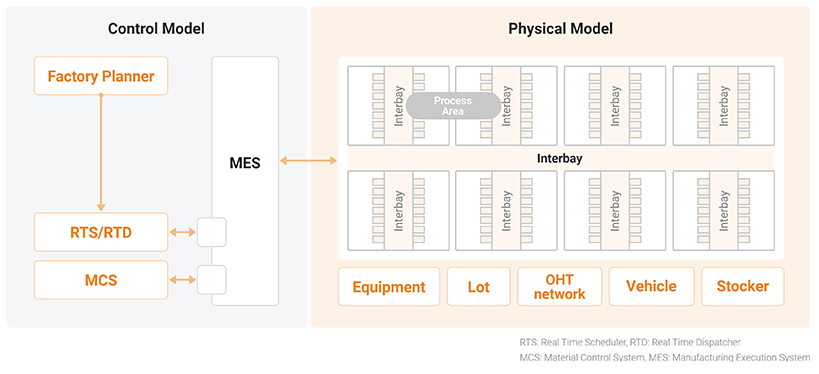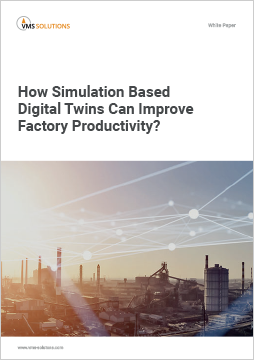How Simulation Based Digital Twins Can Improve Factory Productivity?
August 23, 2022
One of the major concerns from a manufacturing operations perspective is finding good answers to questions such as:
• Where and how much inventory can be secured to reduce missed sales opportunities?
• How many and what type of products should each factory produce to fulfill customer orders and achieve production goals at the same time?
• In what order will each resource (humans and equipment) work to achieve production goals?
• When does a given machine switch the setup and into which jobs?
Manufacturing is executed based on the found answers; resolves the issues that might arise during execution; and repeats the procedure of question, answer, and resolution. The main goal of manufacturing operations is to maximize the efficiency through this process.
The Difficulty of Manufacturing Operations Decision Making
As technology quickly evolves and consumer needs diversify, the life cycle of manufactured goods shortens. For electronic products such as mobile phone, new model comes out every 3-6 months. As a result, manufacturing methods, resources used, and production decisions are rapidly changed. This changing environment makes manufacturing operations complex and difficult. There are more decisions to make, more data to consider so that more time is required for effective decision-making. All these changing variables pose a challenge in the decision-making process. In addition, the analysis of historical data and decision-making based on experience and knowhow does not bring good results in this ever-changing environment.
Despite advances in software technology, the most common tool used to make operational decisions in manufacturing is Microsoft Excel, which is mostly done manually. Although this method is not wrong, it is true that there are several limitations in fully utilizing information processed in execution systems such as ERP and MES for decision making.
Even if a system is available, it operates in an ad-hoc environment and is difficult or limited to change or modify the model in many cases. As a result, it is very difficult to respond to the rapidly changing manufacturing environment.
Data-Driven Factory Digital Twins
Factory Digital Twins (FDT) consists of a Physical Model, which is a set of physical components on the production floor, and a Control Model, which determines and executes the interoperability between the physical models. The physical model is based on resources and jobs located on the factory-layout and may include material handling resources such as vehicles, stockers, and humans.

Figure 1: Component of Factory Digital Twin
As the in-memory twin of the real factory, the FDT contains a data set of the properties and states for each component. Each element of FDT has a simulation model in which runs according to defined state and operation rules in discrete event method.
FDT stays synchronized with real factory data at a manageable level. You can also store and distribute snapshots of the factory state at a specific moment. The twin models can serve many purposes.
How to use FDT
• Comparative evaluation of production operation rules
• Evaluate the impact of changes in production decisions
• Decision support by predicting future factory status
• Improvement and optimization of production operation rules
Conclusion
In order to solve production issues in the era of Industry 4.0, it is necessary to create a system that can quickly respond to the rapidly changing environment. You need to be able to quickly assess the impact of changes and make data-driven decisions. FDT is a key factor in manufacturing operation in the industry 4.0 era, and high-tech manufacturers such as semiconductors have already built and operated various types of FDT. As factory automation and data aggregation through IoT become commonplace, the importance of FDT cannot be overemphasized.
Learn more: Resource Download




